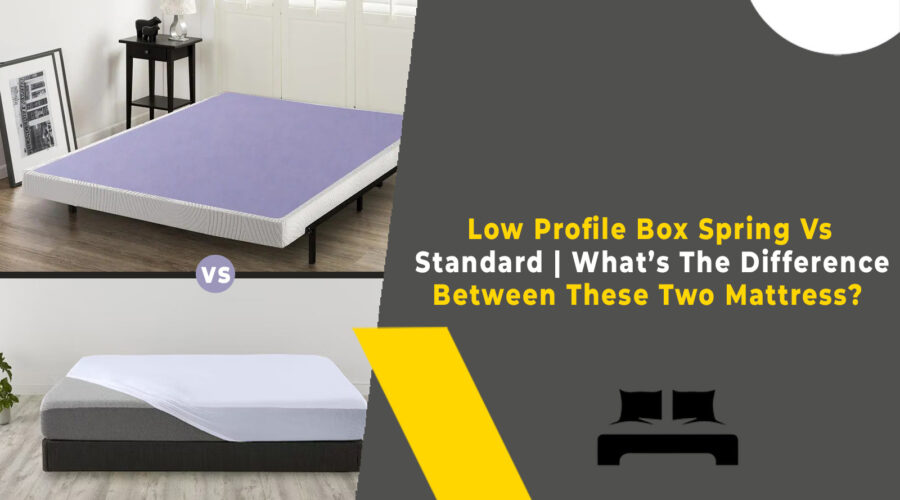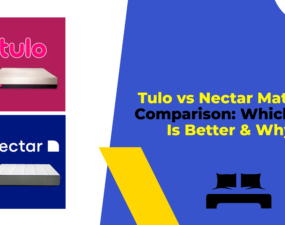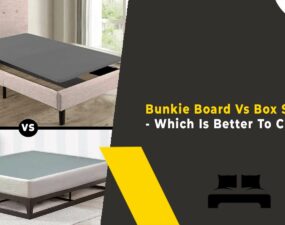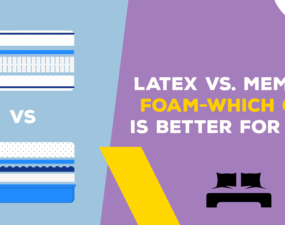When it comes to setting up your bed, the foundation you choose can make a big difference in your overall comfort and room aesthetics. Two popular options to consider are the low–profile box spring and the standard box spring. These supportive structures are designed to fit under your mattress and provide essential stability.
The low-profile box spring is a sleeker and shorter version of the standard one. It’s great for those who prefer a more modern look, have a smaller room, or want to sit lower on the ground but with more comfort. On the other hand, the standard box spring offers traditional height and might be better suited for larger bedrooms or individuals who prefer a higher bed.
In this expert guide, we’ll explain the characteristics of both options and facts about mattresses, highlighting their pros and cons, to help you determine which mattress type is best for your needs.
So, let’s explore these both and find out which one can help you achieve a great night’s sleep while complementing your bedroom style.
How to choose the Best Box Spring?
Choosing the best box spring for your bed involves considering various factors to ensure optimal support, comfort, and compatibility with your mattress and bedroom setup. Here’s a step-by-step guide to help you make an informed decision:
Determine Your Mattress Type
Identify the type of mattress you have – innerspring, memory foam, hybrid, etc. Different mattress types have varying support requirements that can influence your box spring choice.
Assess Your Bed Frame
Consider the type of bed frame you have. Some bed frames, like platform beds, may not require a box spring for support. Ensure your chosen box spring is compatible with your bed frame.
Consider Box Spring Height
Decide on the height you prefer for your bed. Low-profile box springs are lower to the ground, while standard box springs offer more height. Consider your comfort, aesthetic preferences, and any mobility concerns.
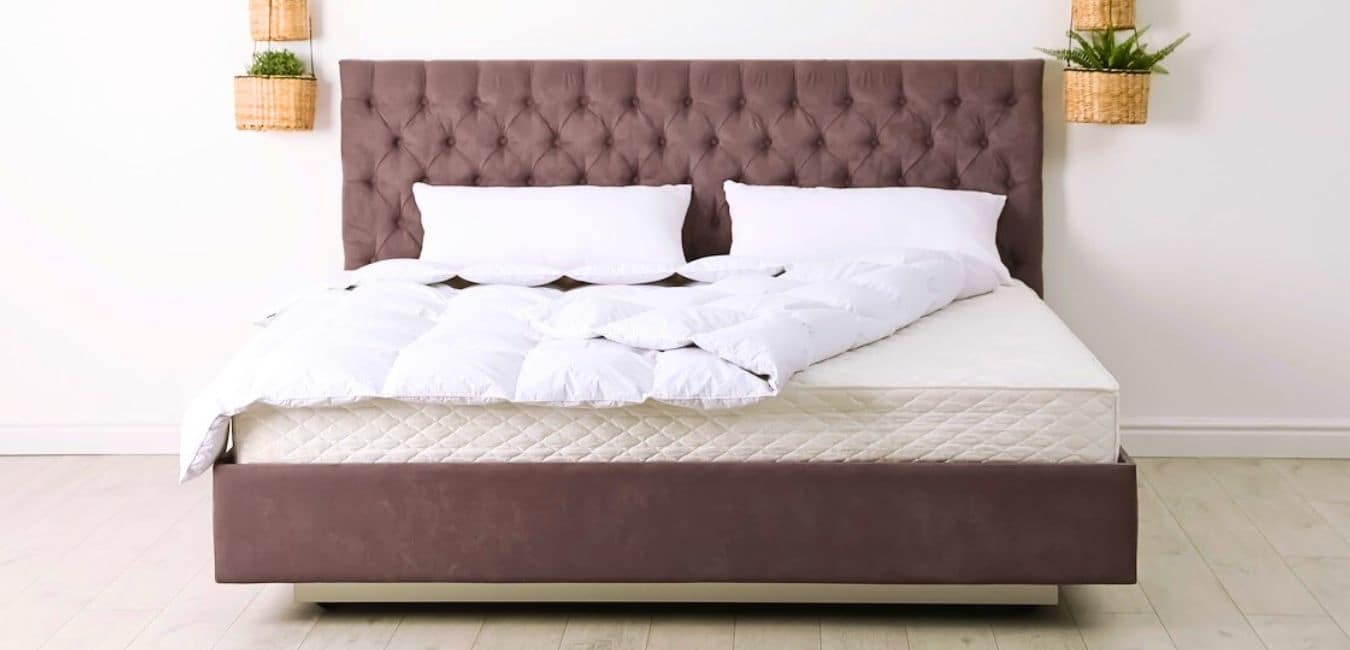
Check Mattress Warranty
Check your mattress warranty guidelines for users’ advantages. Some mattresses require specific types of support systems, and using an incompatible box spring might void the warranty. In case of unsuitable, there is a simple guide about how to return a mattress.
Evaluate Support Needs
If you have an innerspring mattress, a standard box spring can enhance support and mattress longevity. Memory foam mattresses may benefit from the cushioning provided by a low profile or standard box spring.
Air Circulation
If you have a memory foam mattress, consider a box spring with sufficient air circulation to help regulate mattress temperature.
Budget
Determine your budget. Box springs come in different price points to make them more affordable so find an option that meets your requirements without compromising quality.
What is a low-profile Box Spring?
A low-profile box spring is a type of mattress foundation that’s designed to provide support for your mattress while also keeping your bed lower to the ground compared to a standard box spring.
It’s essentially a shorter version of the traditional box spring. This type of box spring typically consists of a wooden or metal frame with a layer of springs or metal grid to offer the necessary support for your mattress with a mattress firm warranty.
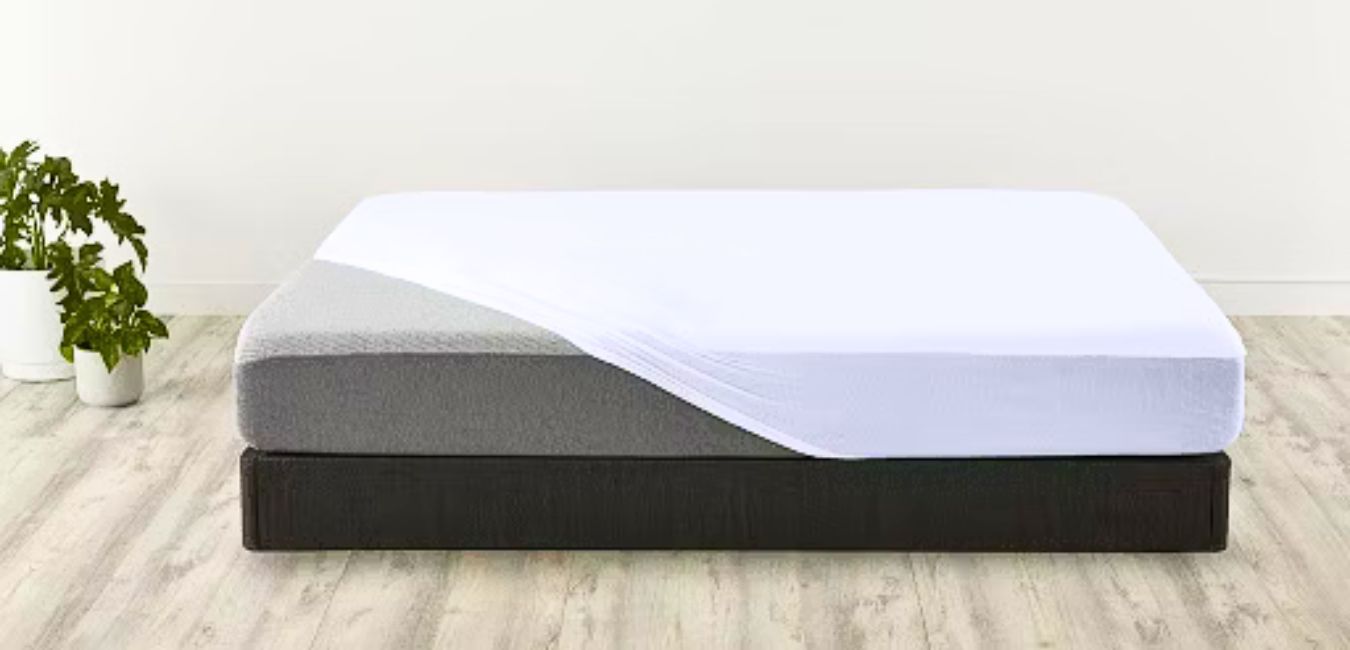
People choose low-profile box springs for a few reasons. One common reason is aesthetics – if you prefer a bed that sits closer to the ground for a more modern and streamlined look.
They’re also great for rooms with lower ceilings or small spaces where a taller bed might feel overwhelming. Additionally, if you have a thicker mattress and don’t want the overall bed height to become too high, a low-profile box spring can help you achieve a balanced look.
Low profile box spring height
The height of a low-profile box spring typically ranges from around 4 to 6 inches. This height is notably shorter than a standard box spring, usually around 9 inches or more.
The lower height of a low-profile box spring is designed to create a more modern and streamlined appearance for your bed, as well as to accommodate preferences for beds that are closer to the ground. This box spring type is often chosen for aesthetic reasons, to match certain room designs, or to address space constraints in smaller bedrooms.
Benefits of low profile
Here are the benefits of using a low-profile box spring, explained with proper headings:
- Modern Aesthetics
A low-profile box spring can enhance the visual appeal of your bedroom by creating a sleek and contemporary look. The lower height of the bed gives off a modern vibe that can complement various interior design styles, from minimalist to urban chic, and help to know how long does a mattress last.
- Child-Friendly
Children transitioning from cribs to beds can benefit from the lower height of a low-profile box spring. It reduces the risk of injury from accidental falls and gives parents peace of mind.
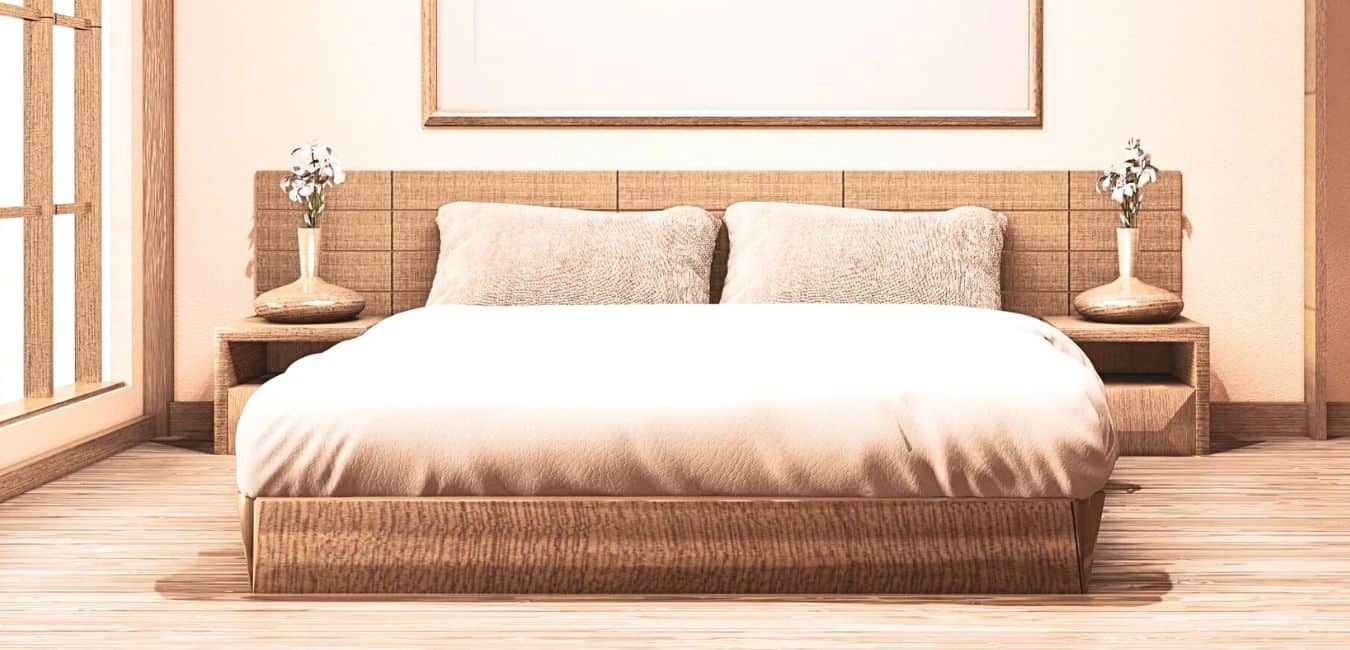
- Space-Saving
In rooms with limited space, a low-profile box spring can be a practical choice. You can feel more open by adjusting your bed in the corner o room, near the wall, which is actually a good option.
- Accessibility
For individuals with mobility challenges, a lower bed height facilitated by a low-profile box spring can be easier to get in and out of. This is especially beneficial for elderly individuals or those with physical limitations.
- Mattress Compatibility
Thicker mattresses have become popular for their comfort features. A low-profile box spring is an ideal companion for these thicker mattresses, preventing the bed from becoming overly high while maintaining a comfortable sleeping surface.
- Cost-Effective
Low-profile box springs are often more affordable than their standard counterparts. If you’re looking for a budget-friendly option without compromising on quality, a low-profile box spring might be the right choice.
What is a standard box spring?
A standard box spring is a type of mattress foundation designed to provide support, stability, and longevity to a mattress. It consists of a wooden or metal frame covered in fabric and contains a layer of springs or a metal grid that acts as a base for the mattress. The primary purpose of a standard box spring is to evenly distribute the weight of the mattress and sleepers, preventing sagging and ensuring optimal comfort.
A standard box spring typically consists of a wooden or metal frame that’s covered in fabric which knows how to firm up a mattress. Inside the frame, there’s a layer of springs or a metal grid that helps distribute the weight of the mattress and the sleeper evenly. The springs or grid work in conjunction with the mattress’s support system to create a stable and comfortable sleeping surface.

Standard box spring height
The height of a standard box spring generally ranges from around 9 to 12 inches. This height is greater than that of a low-profile box spring, which is usually around 4 to 6 inches tall.
The increased height of a standard box spring provides several benefits, including enhanced mattress support, easier entry and exit from the bed, and ample space for under-bed storage. The added height can also create a more balanced proportion in rooms with higher ceilings.
Benefits of Standard Box Spring
Here are the benefits of using a standard box spring, explained with proper headings:
- Superior Mattress Support
A primary advantage of a standard box spring is its exceptional support for your mattress. The layer of springs or metal grid inside the box spring works in tandem with your mattress’s support system, promoting even weight distribution and preventing sagging.
You must know how to store a mattress which contributes to the longevity and overall comfort of your mattress.
- Enhanced Comfort
The added support provided by a standard box spring can enhance the comfort of your sleep. It helps reduce pressure points and provides a cushioned surface that complements the qualities of your mattress, resulting in a more restful and rejuvenating sleep experience.
- Easier Entry and Exit
The additional height provided by a standard box spring can make getting in and out of bed easier, especially for individuals with mobility challenges or who prefer a higher bed surface.

- Optimal Air Circulation
The space between the mattress and the box spring allows for improved air circulation. This helps regulate the temperature of the mattress, reducing the likelihood of heat retention and ensuring a more comfortable sleep environment.
- Compatibility with Bed Frames
Standard box springs are designed to work with various types of bed frames, including platform bed VS box springs, traditional frames with headboards and footboards, and adjustable bases. This makes them a versatile option for different bed setups.
- Proportional Fit for Larger Rooms
In bedrooms with higher ceilings, a standard box spring can help fill the vertical space and create a balanced visual proportion, making the bed appear well-fitted within the room.
Ultra-low Profile Box Spring
An ultra-low-profile box spring is a type of mattress foundation that offers even lower height compared to standard low-profile box springs. It is designed for individuals who prefer an extremely low bed height or have specific aesthetic preferences. Generally, an ultra-low profile box spring measures around 2 to 3 inches in height.
These ultra-low profile box springs are particularly suitable for modern and minimalist bedroom designs, as well as for rooms with lower ceilings or limited space. They provide a sleek and subtle look while still offering essential support for your mattress.
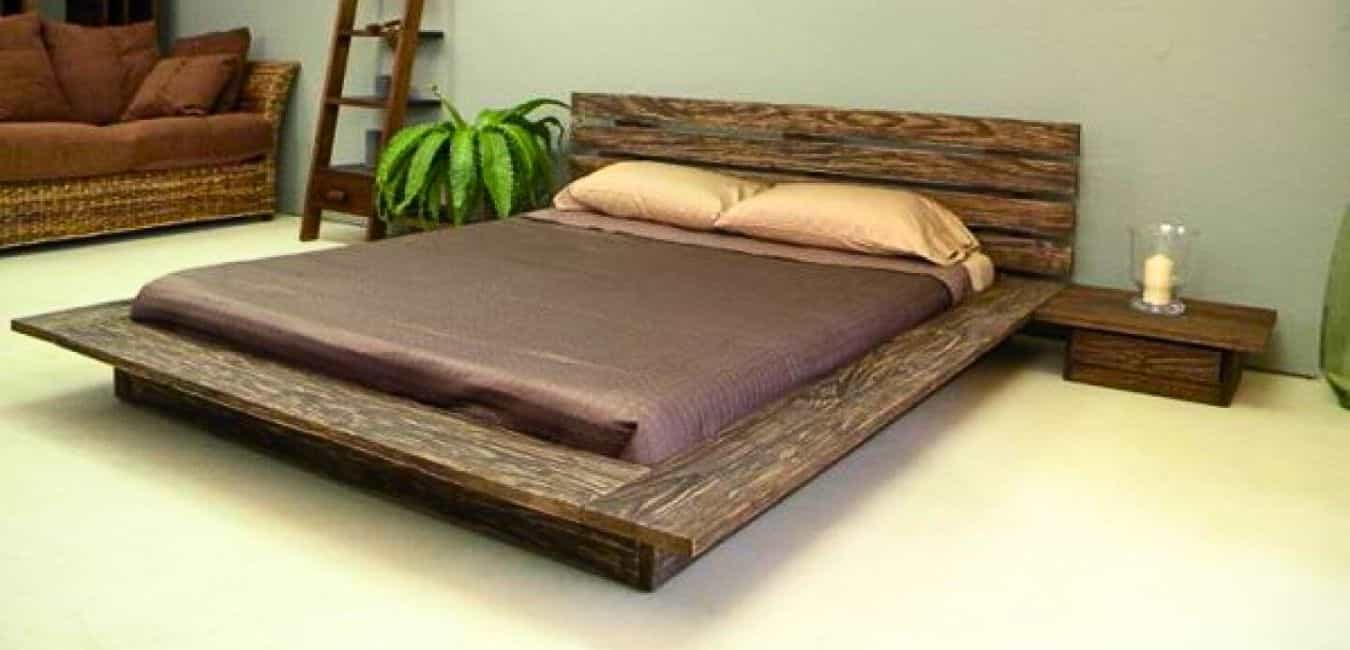
It’s important to note that while ultra-low-profile box springs can be a stylish choice, they might not offer the same level of airflow or storage space as standard or low-profile box springs due to their minimal height. When considering an ultra-low profile box spring, be sure to take into account your comfort preferences, the type of mattress you have, and how the bed height aligns with your overall bedroom design.
Low profile VS Regular box spring
Here’s a comparison of low profile VS regular (standard) box springs presented in columns for easy understanding:
| Aspect | Low Profile Box Spring | Regular (Standard) Box Spring |
| Height | Approximately 4 to 6 inches | Typically around 9 to 12 inches |
| Space Considerations | Ideal for rooms with lower ceilings or limited space | Better suited for rooms with ample space |
| Bed Entry/Exit | May be lower, suitable for those with mobility challenges or shorter stature | Offers greater height for easier access |
| Under-Bed Storage | Limited space underneath due to a lower height | More clearance for substantial storage |
| Mattress Compatibility | Suitable for various mattress types, including memory foam and innerspring | Compatible with a wide range of mattresses |
| Room Proportion | Works well in modern and minimalistic room designs | Fits larger rooms with higher ceilings |
| Temperature Regulation | Less space for air circulation between the mattress and the box spring | Better air circulation, aiding temperature regulation |
| Price Range | Generally affordable, similar to standard box springs | Comparable pricing to low profile varies |
Remember that your choice between a low profile and a regular box spring will depend on your personal preferences, bedroom design, types of memory foam, and any specific needs you may have.
Low-profile box spring
Standard box spring
Low Profile Box Spring Vs Standard – FAQs
Conclusion
This informative article sheds light on the expert-backed difference between low-profile and standard box springs. It provides valuable insights into the distinct user advantages of each option, catering to various preferences and room dimensions.
From modern aesthetics and space-saving benefits to enhanced support and mattress compatibility, mattress users gain a comprehensive understanding of the factors influencing the choice.
Whether opting for the sleek appeal of low profile or the versatility of standard, this expert analysis equips readers with the knowledge needed to make an informed decision for their ideal bed setup. After the whole observation and expert experience.
Also, you must know why mattresses are so expensive.

